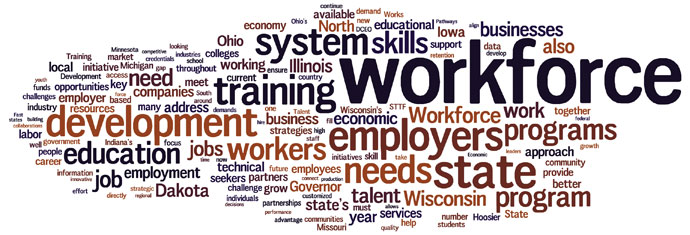Ask any economic development professional what keeps them awake at night and the subject of workforce development is bound to be among the answers. We posed four questions about the topic to the state workforce development directors of 12 states in the Midwest region. Their answers form a snapshot of the challenges and some of the innovative ways states are addressing this crucial issue. We’ve excerpted their answers here. To read their responses in full, please click here.
What is your state’s biggest challenge in workforce development?
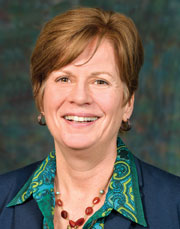 “…Reducing the gap between the education level of workers and the skills needed for employers to fill critical job openings.” Therese McMahon, Deputy Director, Illinois Office of Employment & Training
“…Reducing the gap between the education level of workers and the skills needed for employers to fill critical job openings.” Therese McMahon, Deputy Director, Illinois Office of Employment & Training- “We have been faced with dwindling dedicated resources. This is coupled with the skills gap — an issue employers throughout the nation continue to face by not being able to connect with workers that possess the skill set companies need, which often are technical skills.” Julie Gibson, Director, Missouri Division of Workforce Development
- “North Dakota’s greatest challenge in workforce development is the lack of a workforce.” Wayde Sick, Director, North Dakota Workforce Development Division
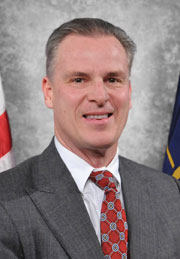 “…Transforming our training and education programs and systems into a more employer-informed approach.” Steve Braun, Indiana Commissioner of Workforce Development
“…Transforming our training and education programs and systems into a more employer-informed approach.” Steve Braun, Indiana Commissioner of Workforce Development- “One of the biggest challenges facing Minnesota’s workforce development are employment barriers for
 people of color and people with disabilities. Although Minnesota has one of the highest labor force participation rates in the country, employment is much lower for these populations. In order for our economy to reach its fullest potential, we need to remove barriers to employment for these groups.” Jeremy Hanson Willis, Deputy Commissioner of Workforce Development, Minnesota Department of Employment and Economic Development
people of color and people with disabilities. Although Minnesota has one of the highest labor force participation rates in the country, employment is much lower for these populations. In order for our economy to reach its fullest potential, we need to remove barriers to employment for these groups.” Jeremy Hanson Willis, Deputy Commissioner of Workforce Development, Minnesota Department of Employment and Economic Development
How is your state working to overcome that challenge?
- “We are working to grow our population. One program we are focusing on is Home Base Iowa, a recruitment effort centered on transitioning military personnel. Home Base Iowa’s first year achieved great results with 633 veterans hired by Iowa companies.” Debi Durham, Director, Iowa Economic Development Authority
- “Kansas introduced a number of initiatives to help workers gain technical skills. A Career and Technical Education Initiative allows high school students to take post-secondary technical education classes at no cost.” Michael Copeland, Deputy Secretary of Workforce Services at the Kansas Department of Commerce
- “Wisconsin Fast Forward-Blueprint for Prosperity targets additional funds to: address technical college student wait lists in high-demand fields; support innovative school-to-work collaborations to provide high school pupils with industry-recognized certifications in high-demand fields; and enhance employment opportunities for persons with disabilities through customized skills training with job placement commitments.” Reggie Newson, Secretary, Wisconsin Department of Workforce Development
 “(In summer 2014), the Governor and the South Dakota Workforce Initiatives cabinet visited six communities and hosted day-long Workforce Summits. The purpose was to provide a forum to discuss current programs, learn about demographics and workforce trends, and determine what strategies to move forward. During Workforce Summit follow-up meetings, Governor Daugaard announced the opportunity for communities to apply for the Community Matching Incentive Program. This grant encourages cross-sector collaboration in developing workforce development plans.” Marcia Hultman, Cabinet Secretary, South Dakota Department of Labor and Regulation
“(In summer 2014), the Governor and the South Dakota Workforce Initiatives cabinet visited six communities and hosted day-long Workforce Summits. The purpose was to provide a forum to discuss current programs, learn about demographics and workforce trends, and determine what strategies to move forward. During Workforce Summit follow-up meetings, Governor Daugaard announced the opportunity for communities to apply for the Community Matching Incentive Program. This grant encourages cross-sector collaboration in developing workforce development plans.” Marcia Hultman, Cabinet Secretary, South Dakota Department of Labor and Regulation- “Ohio’s In-Demand Occupations Reports — a dynamic database of the state’s most urgent job needs — [was] developed using state labor statistics, online job posting trends, and direct employer feedback. This data is embedded into OhioMeansJobs.com, the state’s one-stop career counseling and employer services center, helping to guide students and individuals along a career path toward promising occupations in Ohio.” Dawn Larzelere, Director, Ohio Governor’s Office of Workforce Transformation
- “Missouri has successfully implemented the ACT Certified Work Ready Communities (CWRC) initiative. CWRC is a voluntary initiative led by community leaders that links workforce development to education and aligns economic development needs of communities.” Julie Gibson, Director, Division of Workforce Development
What is your state’s ace in the hole, or most strategic advantage, with respect to workforce development?
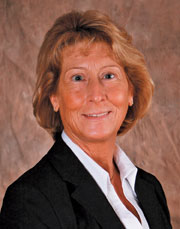 “Michigan’s key workforce strategy is the operation of a Demand-Driven system, which has been unanimously adopted by the state and all 24 local service delivery areas — Michigan Works! Agencies. A truly demand-driven workforce development system.” Christine Quinn, Director, Michigan Workforce Development Agency
“Michigan’s key workforce strategy is the operation of a Demand-Driven system, which has been unanimously adopted by the state and all 24 local service delivery areas — Michigan Works! Agencies. A truly demand-driven workforce development system.” Christine Quinn, Director, Michigan Workforce Development Agency- “Wisconsin will launch a new labor market information system (in 2015) that will dramatically improve our ability to anticipate, identify and meet labor market needs in the 21st century economy.” Reggie Newson, Secretary, Wisconsin Department of Workforce Development
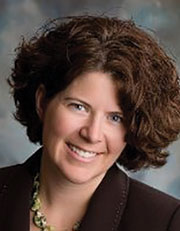 “A big part of this work is knowing what works, and what doesn’t, and that evaluation of the state’s workforce programs is taking place through the Workforce Success Measures project. Working with stakeholders and The Ohio State University, Ohio has committed to the creation of a common set of performance metrics, allowing policy makers to continually monitor progress across multiple programs, creating better transparency and greater accountability.” Dawn Larzelere, Director, Ohio Governor’s Office of Workforce Transformation
“A big part of this work is knowing what works, and what doesn’t, and that evaluation of the state’s workforce programs is taking place through the Workforce Success Measures project. Working with stakeholders and The Ohio State University, Ohio has committed to the creation of a common set of performance metrics, allowing policy makers to continually monitor progress across multiple programs, creating better transparency and greater accountability.” Dawn Larzelere, Director, Ohio Governor’s Office of Workforce Transformation- “The state’s newly revamped workforce training program — Missouri Works Training. Signed into law a year ago by Governor Jay Nixon, Missouri Works Training improves on the existing workforce programs by streamlining paperwork and combining resources to maximize impact.” Julie Gibson, Director, Missouri Division of Workforce Development
- “The most strategic advantage the state has is our size. Since we are small, we are mobile and willing to work together to solve our challenges.” Wayde Sick, Director, North Dakota Workforce Development Division
What plans are in place to improve your state’s workforce/talent development resources in 2015?
- “Illinois plans to implement the major strategies promoted by the US Chamber of Commerce Foundation’s Talent Pipeline Management (TPM) initiative. These TPM strategies provide the next steps in linking economic and workforce development and building STEM-related talent pipelines through the Illinois Pathways initiative.” Therese McMahon, Deputy Director, Illinois Office of Employment & Training
- “Michigan is seeking increased funding from the State Legislature for year three of the Skilled Trades Training Fund; we are cross-training state and local staff and supporting positions based on function, not programs, to mitigate funding influxes; as a system, we are moving towards a non-profit board structure in order to secure non-federal funds.” Christine Quinn, Director, Michigan Workforce Development Agency
 “… Continuation of the Find the Good Life in North Dakota initiative, educator internships, student loan repayments and more options for distance and e-learning at our colleges.” Wayde Sick, Director, N.D. Workforce Development Division
“… Continuation of the Find the Good Life in North Dakota initiative, educator internships, student loan repayments and more options for distance and e-learning at our colleges.” Wayde Sick, Director, N.D. Workforce Development Division- “… Prioritize programs to equip Hoosier youth with the resources, motivation and mentoring they need to obtain their high school diploma or equivalency and transition into the labor force or a post-high school education setting.” Steve Braun, Indiana Commissioner of Workforce Development
- “The advent of the Workforce Innovation and Opportunity Act will help to strengthen our current partnerships.” Marcia Hultman, Cabinet Secretary, South Dakota Department of Labor and Regulation
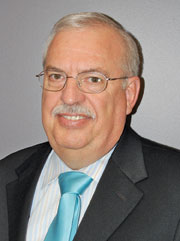 “Career Academies — strong partnerships between high schools and institutions offering post-secondary education emphasizing high-skill trades and business — are popping up statewide to address critical shortages in technical occupations. The Nebraska Departments of Economic Development and Labor also regularly consult with Industry Councils comprised of top-level industry executives who advise state officials on workforce and other industry-specific needs so that we can effectively and efficiently respond when such specific workforce challenges arise.” John Albin, Acting Commissioner of Labor, Nebraska Department of Economic Development
“Career Academies — strong partnerships between high schools and institutions offering post-secondary education emphasizing high-skill trades and business — are popping up statewide to address critical shortages in technical occupations. The Nebraska Departments of Economic Development and Labor also regularly consult with Industry Councils comprised of top-level industry executives who advise state officials on workforce and other industry-specific needs so that we can effectively and efficiently respond when such specific workforce challenges arise.” John Albin, Acting Commissioner of Labor, Nebraska Department of Economic Development
